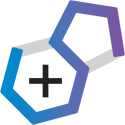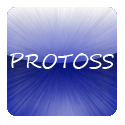 ProteinsPlus
ProteinsPlus

The ProteinsPlus web server aims to support life scientists in working with protein structures. Protein structures are the key to understanding protein function. They are an important resource in many biotechnological application areas from pharmaceutical research to biocatalysis. ProteinsPlus focuses on protein-ligand interactions. The server provides support for the initial steps of dealing with protein structures, namely structure search (MicroMiner, GeoMine), quality assessment (EDIAscorer, StructureProfiler), and preprocessing (Protoss). JAMDA enables users to perform an on-the-fly molecular docking of up to five molecules. The poses can then be visualized in 2D (PoseView, PoseEdit). Furthermore, advanced options, such as protein pocket detection (DoGSite), prediction of water molecule positions (WarPP), protein structure ensemble generation (SIENA), prediction of metal coordination (METALizer), the analysis of solvent channels in protein crystals (LifeSoaks), or the categorization of protein-protein-interfaces (HyPPI) are supported.
The web service is available at https://proteins.plus/.
ProteinsPlusPublikationen
- Ehrt, C.; Schulze, T.; Graef, J.; Diedrich, K.; Pletzer-Zelgert, J.; Rarey, M. (2025) ProteinsPlus: a publicly available resource for protein structure mining . Nucleic Acids Research, 53(W1):W478-W484.
- Schöning-Stierand, K.; Diedrich, K.; Ehrt, C.; Flachsenberg, F.; Graef, J.; Sieg, J.; Penner, P.; Poppinga, M.; Ungethüm, A.; Rarey, M. (2022) ProteinsPlus: a comprehensive collection of web-based molecular modeling tools . Nucleic Acids Research, 50(1):W611-W615.
- Schöning-Stierand, K.; Diedrich, K.; Fährrolfes, R.; Flachsenberg, F.; Meyder, A.; Nittinger, E.; Steinegger, R.; Rarey, M. (2020) ProteinsPlus: interactive analysis of protein-ligand binding interfaces . Nucleic Acids Research, 48(W1):W48-W53.
- Fährrolfes, R.; Bietz, S.; Flachsenberg, F.; Meyder, A.; Nittinger, E.; Otto, T.; Volkamer, A.; Rarey, M. (2017) ProteinsPlus: a web portal for structure analysis of macromolecules . Nucleic Acids Research, 45:W337-W343.
 SMARTSplus
SMARTSplus

SMARTSplus is the ultimate visualization and analysis platform for SMARTS patterns in cheminformatics. It provides access to five tools.
SMARTSview revolutionizes the way chemical patterns are interpreted by transforming complex SMARTS expressions into intuitive, visual representations. Beyond visualization, SMARTSview also serves as a REST service, enabling seamless integration into web applications. Learn how to use the service here.
SMARTScreate extends the power of SMARTSview with an interactive graphical editor and a graph mining component. It generates discriminative SMARTS patterns automatically based on molecule sets. It is available as an online service and integrated into our interactive SMARTSeditor, which is part of the NAOMI ChemBio Suite, making pattern discovery effortless. SMARTS patterns are crucial for compound filtering in molecular design. However, analyzing hundreds of structural filters manually is impractical.
SMARTScompare and SMARTSsearch automate this task, providing deep pattern analysis and similarity search functionality. A stand-alone command-line tool is also available as part of our NAOMI ChemBio Suite. Expanding the power of SMARTS beyond molecules, ReactionSmartsCompare introduces comparison and search capabilities for reaction SMARTS patterns, facilitating retrosynthesis and molecule transformation analyses.
SMARTSexplore is a specialized tool designed to visualize and analyze numerous collections of SMARTS expressions and their similarity relationships. Accessible directly from this platform, SMARTSexplore operates as an independent web server, featuring thousands of patterns sourced from more than ten distinct collections. Additionally, it enables users to upload custom SMARTS patterns for direct comparative analysis.
The web service is available at https://smarts.plus/.
SMARTSplusPublikationen
- Ehrt, C.; Krause, B.; Schmidt, R.; Ehmki, E.; Rarey, M. (2020) SMARTS.plus – A Toolbox for Chemical Pattern Design . Molecular Informatics, 39(12)
 Software Server
Software Server

The AMD Software Server is the central download plattform for all our tools. After registration you get access to several programs related to cheminformatics and structure-based design. The software is for free for academic use and evaluation purposes.
Software Server SmartChemist
SmartChemist

The SmartChemist server shall enable anyone to discuss the chemistry of molecules competently and adequately. It matches common substructures and highlights them, providing their (trivial) names. The substructures highlighted are common functional groups, small (hetero)cycles, and some biologically relevant molecules. As always, there are multiple different resources we used to build the SmartChemist, namely RDKit for the cheminformatics platform to enable doing this completely open source [1], a publication of Judson et al.,[2] the SMARTS examples page of the Daylight page as a starting point for common functional groups[3] (considerably altered), and PubChem[4,5] to automatically extract (hetero-)cycle names.
The web service is available at https://chemist.smarts.plus/.
[1] RDKit: Open-source cheminformatics. https://www.rdkit.org
[2] Judson, P. N.; Ihlenfeldt, W. D.; Patel, H.; Delannee, V.; Tarasova, N.; Nicklaus, M. C. Adapting CHMTRN (CHeMistry TRaNslator) for a New Use. J Chem Inf Model 2020, 60 (7), 3336-3341. DOI: https://doi.org/10.1021/acs.jcim.0c00448
[3] https://daylight.com/dayhtml_tutorials/languages/smarts/smarts_examples.html
[4] Kim, S.; Chen, J.; Cheng, T.; Gindulyte, A.; He, J.; He, S.; Li, Q.; Shoemaker, B. A.; Thiessen, P. A.; Yu, B.; et al. PubChem 2025 update. Nucleic Acids Res 2025, 53 (D1), D1516-D1525. DOI: https://doi.org/10.1093/nar/gkae1059
[5] PubChem. https://pubchem.ncbi.nlm.nih.gov/
Publikationen
- Gutermuth, T.; Penner, P.; Sieg, J.; Dolfus, U.; Rarey, M. (2025) SmartChemist - Simplifying Communication About Organic Chemical Structures . Journal of Chemical Information and Modeling
 PoseView (replaced by ProteinsPlus)
PoseView (replaced by ProteinsPlus)

PoseView generiert automatisch zweidimensionale Diagramme von Komplexen mit Schwerpunkt auf dem Interaktionsmuster zwischen Ligand und Protein. Interaktionen zwischen Molekülen werden durch ein eingebautes Interaktionsmodell geschätzt, welches auf Atomtypen und einfachen geometrischen Kriterien basiert. Die Qualität der resultierenden Diagramme ist vergleichbar mit handgezeichneten Beispielen aus Lehrbüchern und wissenschaftlichen Veröffentlichungen.
PoseView @ PDB
Publikationen
- Stierand, K., Rarey, M. (2010) Drawing the PDB - Protein-Ligand Complexes in two Dimensions . Medicinal Chemistry Letters, 1(9):540-545.
- Stierand, K., Rarey, M. (2007) From Modeling to Medicinal Chemistry: Automatic generation of two-dimensional complex diagrams . ChemMedChem, 2(6):853-860.
- Stierand, K., Maaß, P. C., Rarey, M. (2006) Molecular Complexes at a Glance: Automated Generation of two-dimensional Complex Diagrams . Bioinformatics, 22(14):1710-1716.
 PPI-Server (replaced by ProteinsPlus)
PPI-Server (replaced by ProteinsPlus)

Der PPI-Server klassifiziert eine Protein-Protein-Interaktion mit Hilfe eines maschinellen Lernverfahrens in biologische Komplexe (transient oder permanent) oder Kristallartefakte. Hierzu werden zwei Deskriptoren verwendet, der hydrophobe Effekt, der mittels HYDE berechnet wird, und einem Faktor, der die Symmetrie des Protein-Protein-Interfaces wiedergibt.
PPI-Server (replaced by ProteinsPlus) ProToss (replaced by ProteinsPlus)
ProToss (replaced by ProteinsPlus)

ProToss wurde zur automatisierten Vorhersage von Wasserstoffatomen in Protein-Ligand-Komplexes entwickelt. Es ermöglicht sowohl zu einer Komplexstruktur fehlende Wasserstoffe hinzuzufügen als auch Koordinaten vorherzusagen sowie sinnvolle Tautomer und Protonierungszustände zu generieren.
ProToss (replaced by ProteinsPlus)Publikationen
- Bietz, S.; Urbaczek, S.; Schulz, B.; Rarey, M. (2014) Protoss: a holistic approach to predict tautomers and protonation states in protein-ligand complexes . Journal of Cheminformatics, 6(12):1-12.
- Lippert, T., Rarey, M. (2009) Fast automated placement of polar hydrogen atoms in protein-ligand complexes . Journal of Cheminformatics, 1(13)
Offline
 ChemBioNavigator
ChemBioNavigator

Der ChemBioNavigator dient zur Visualisierung des chemischen und biologischen Raumes eines Sets von kleinen Molekülen; dabei liegt der Focus auf den physicochemischen Eigenschaften. Die unterschiedlichen physicochemischen Eigenschaften des Sets können gegeneinander aufgetragen werden, und es werden Informationen zu einzelnen Datenpunkte über Links, die zu den originalen Datenquellen führen, zur Verfügung gestellt. Desweiteren kann nach strukturell ähnlichen Molekülen per Substruktursuche oder Ähnlichkeitssuche gesucht werden. ACHTUNG, der ChemBioNavigator ist zurzeit aufgrund von Kompatibilitätsproblemen zum OpenPHACTS API ausgeschaltet.
ChemBioNavigatorPublikationen
- Stierand, K., Harder, T., Marek, T., Hilbig, M., Lemmen, C., Rarey, M. (2012) The internet as scientific knowledge base: Navigating the chem-bio space . Molecular Informatics:543-546.